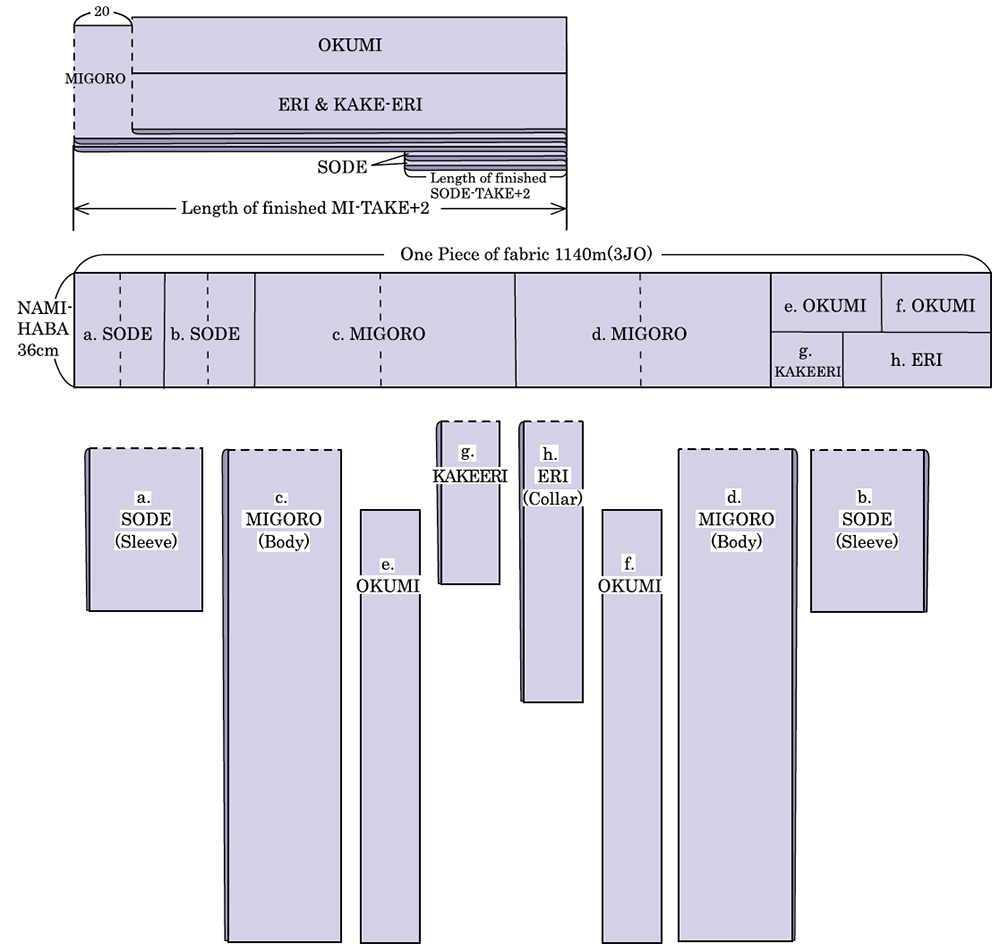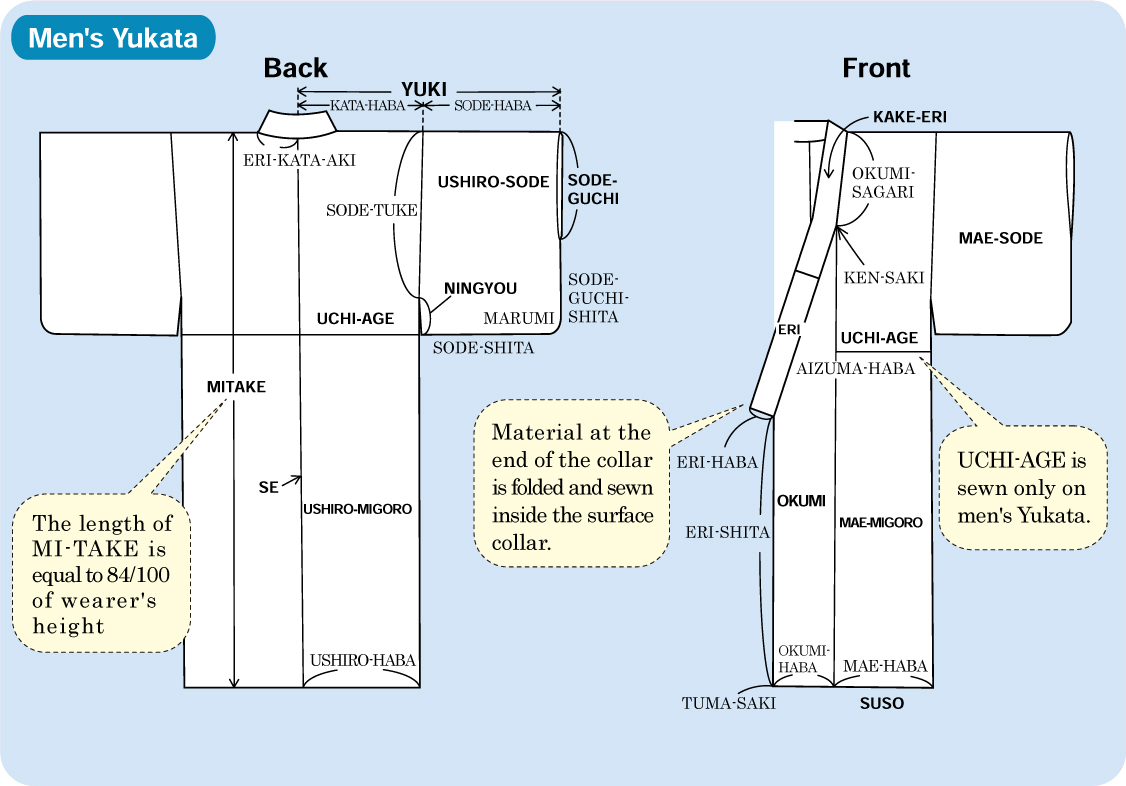History of the Yukata
Yukata is an abbreviation for Yukatabira, an unlined hemp kimono originally worn by nobles when taking a bath.
With the success of cotton cultivation in Japan during the Muromachi period (14th to 16th century), a wide acceptance of cotton Yukata among the general public began in the Edo period (17th to 19th century). Since then,
元禄時代には、温泉場で温泉ゆかたが着られ、日本でも木綿の栽培が成功、天保の改革で庶民の絹の着用が禁じられたこともあり、木綿のゆかたが一般に広く用いられるようになりました。
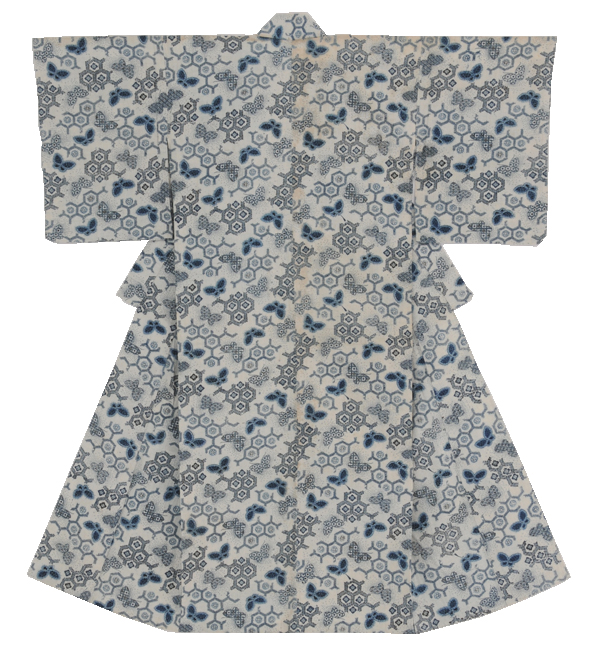
Yukata has become an essential item in the Japanese daily clothing life as smooth after-bath robe for the evenings or as sleepwear for men and women of all ages, or as clothes for daily life and outings during the hot and humid summer, or as uniforms with matching patterns to wear at Bon-odori and other summer festivals.
Its fate as daily wear has led to minimal survival of old Yukatas. However, Bunka Gakuen Costume Museum owns some beautiful indigo-dyed Yukatas from the Meiji to early Showa period.
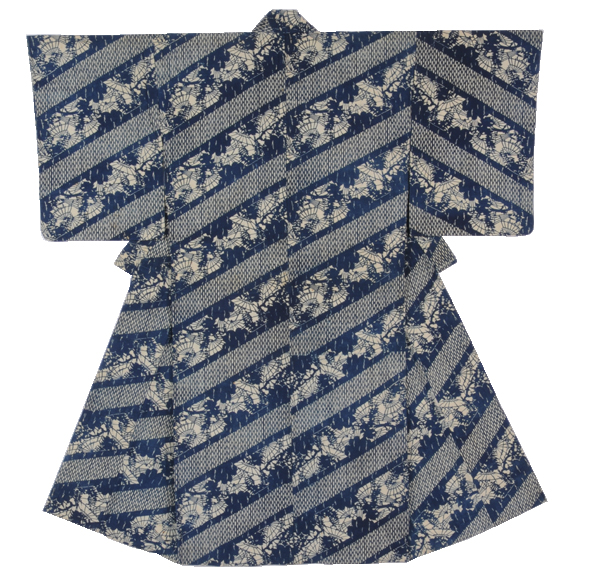
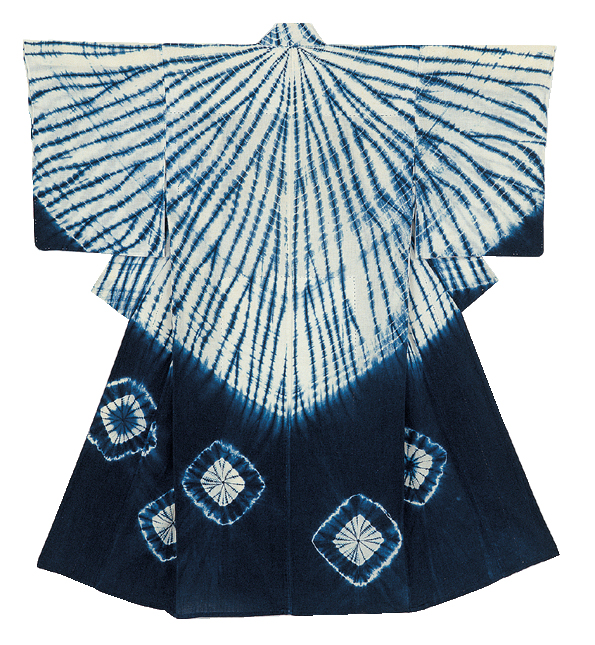
As the rainy season comes to an end, people flock out to the Tanabata star festivals, Bon-odori dance festivals, morning glory flower markets, fireworks and other festivities in their Yukatas. Yukata is a fashionable and colorful item enjoyed by young men and women for a switch from their daily life committed to western clothes.
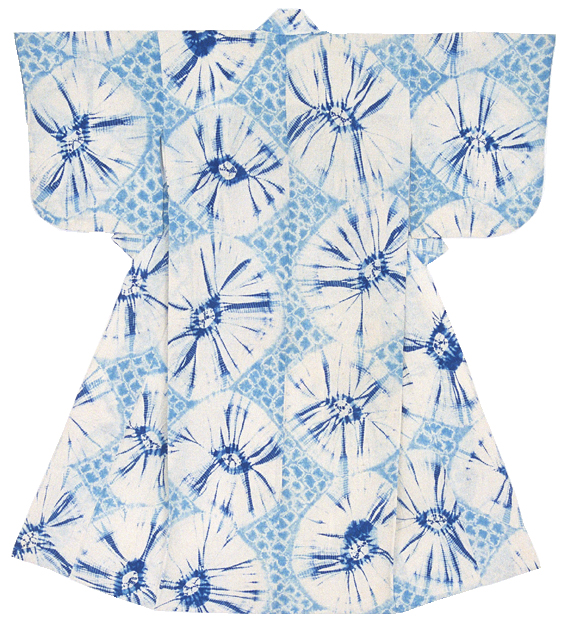
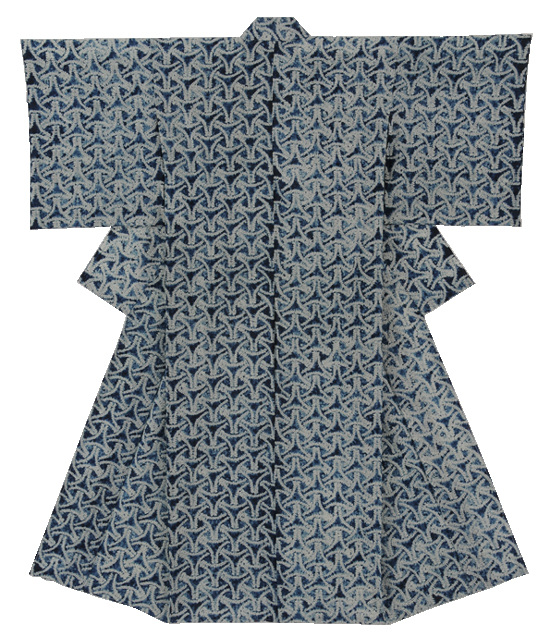
ゆかたの形と名称
Configuration of the Yukata
Yukata is made from one piece of fabric cut into several specific lengths and then sewn together. A standard piece of fabric measures 36cm wide and 1140cm to 1200cm long. In recent years, fabric of 38 to 40 cm width also became common.
Yukata consists of 8 parts of fabric, namely 2 SODEs, 2 MIGOROs, 2 OKUMIs, an ERI and a KAKE-ERI. Yukata's SODE covers the arms, while MIGORO and OKUMI covers from the shoulders to the ankles. OKUMI is overlapped in the front and supplements the lack of MIHABA width.

